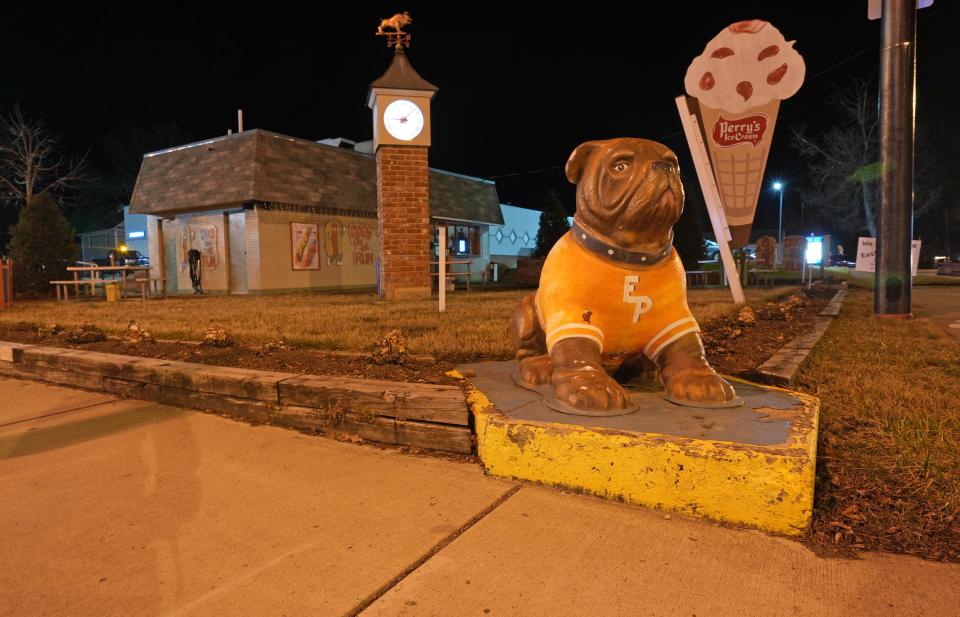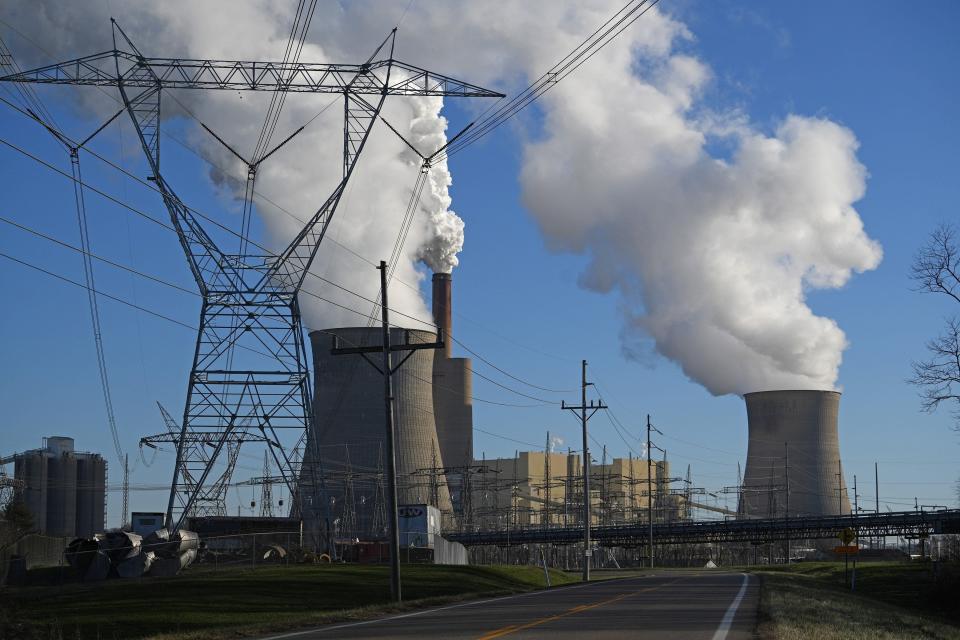East Palestine after dark: 'Could you suspend your fear and stay put?'| Opinion
Doral Chenoweth III joined the Columbus Dispatch in 1990 as a staff photographer. Aside from the Dispatch, his work has appeared in several books and a list of publications that includes the New York Times, The (London) Daily Mail, TIME magazine, USA Today, and the National Geographic.
The camera lens sometimes only captures things at the surface level at the scene of a disaster. It documents the fire, the flood, the train derailment, but can miss the agony people face in a slowly-developing horror story — the real darkness.
Often though, the lens catches much more. Those images can cause you to wonder about the future of a place and a people.
Nearly three weeks after a train derailment caused East Palestine to become an environmental disaster, I was sent to that northeastern Ohio village to take photos for the Columbus Dispatch and Gannett newspapers across the nation.
Earlier: 'Bomb train' derailed. We are suffering pain of the hit.
My specific assignment was to cover Erin Brockovich talking with the residents during a town hall event.
The well-known activist took the stage at East Palestine High School for a seminar with local and national attorneys who want to represent residents in future lawsuits against the railroad.
When that assignment was done, I strolled around the town, after dark, on a cold February night with clear skies and a crescent moon hanging in the sky.
My goal was to capture East Palestine at night, when it seemed to unwind from the stress that came with the day.
East Palestine, Ohio

The village's main drag is anchored by a True Value hardware store.
The streetlights obliged my lens with nice light over the storefronts. I found that even in the alleys, the night shadows cast geometric light patterns that looked good in a viewfinder. And, just like any number of Midwestern towns, the ever-present railroad tracks cross through town.
After about two hours, my fingers were becoming numb from the cold, I looked between a few buildings and thought I saw a water fountain.
It seemed odd to have a water fountain on a side street, so I walked over to it. But it wasn’t what I expected.
Huge diesel-powered pumps sprayed water into the air. I recalled a water-quality expert with Brockovich earlier that evening. He said the clean-up crews were aerating the stream water in town to dispel the toxic, cancer-causing vinyl chloride.
That is what I was looking at.
It took me a minute to get my bearings because I saw the creek ran from a neighborhood to a big culvert. That culvert then ran directly under the East Palestine Municipal Building. I had to look twice to see if this was true: does the creek run under the village hall?
It did.
More: Why a water research analyst said Columbus' water supply is safe
The next morning, I went to the city park and found more pumps.
They were everywhere.
Disaster response companies set up diesel-powered pumps to suck creek water up through five-inch hoses, then it gets aerated. Thats what looked like a water fountain.

The water expert, Robert Bowcock, said the aeration removes the vinyl chloride, but it needs to be done in an enclosed container, not into the open air. He said it especially should not be done in a city park with children watching.
The authorities on the scene, including the environmental protection agencies and emergency management agencies allowed the aeration. Ohio Gov. Mike DeWine says the water is OK.
In fact, he drank a glass of water from a resident's home.
Cheshire, Ohio

The train derailment's impact on East Palestine made me reflect on the much different environmental challenge residents of the village of Cheshire, Ohio faced in 2001.
The Gavin Power Plant, one of the world's largest coal-fired power plants, was installing scrubbers to emit fewer toxins into the air.
More: Bought-out Cheshire village lives on
But during the testing phase, a ghastly blue cloud lingered along the ground. At the time, American Electric Power owned the plant. After the blue cloud, residents were becoming more vocal and more organized in their opposition to their mammoth neighbor.
In an abrupt move, the power company brought forth an incredible offer: a pot of $20 million to buy every piece of real estate in the village. It meant every homeowner who chose to do it got about three-and-a-half times the assessed value of their property.
The downside: they had to sign an agreement never to sue the power company for health-related claims. Considering the Gavin smokestacks emitted pollutants over Cheshire such as sulfur dioxide, sulfur trioxide, nitrogen oxides, mercury, not to mention arsenic in the coal ash, it might have been the best offer possible.
Nearly everyone in Cheshire took the buyout offer.
Most of the houses were demolished; many, but not all, businesses moved on. The village itself still exists today only because other residents north of the buyout annexed into the village, affording them some services.
But most of the original village is just a grassy field, devoid of any small-town charm.
With twenty years of hindsight, the $20 million deal wasn't perfect, but at least it was something that allowed every community member to decide their own future without years or decades of litigation.
Could something similar happen in East Palestine? What would you do if you found yourself in the middle of disaster?
What would you do in those shoes?

As a visitor dropping into East Palestine for a few days, it’s easy to see the damage at the train derailment site.
But visiting this village park made me realize East Palestine’s residents have a deeper problem. If I were a 59-year-old resident, I might take my chances and stay. I’d say to myself that I’m going to die of something, someday, somehow.
But if I lived there, would I take a grandchild to that park and let her pick daisies? Or could I let her walk barefoot through the lawn, without ever worrying that the vinyl-chloride toxins would enter her growing body?
Would your conscience be clear, allowing you to suspend your fear and stay put?
Such a tragedy is not just a concern for small towns. Columbus is not immune to train derailments.
In fact, the derailment of an eastbound Norfolk Southern Railway Company train just after 2 a.m. on July 11, 2012 caused the mandatory evacuation of Weinland Park residents.
Luckily no one was hurt.
Everything changed in one tragic moment for East Palestine residents.
Outside of the view of the cameras — mine and all the other journalists who have covered the derailment — they face some very difficult decisions.
Doral Chenoweth III joined the Columbus Dispatch in 1990 as a staff photographer. Aside from the Dispatch, his work has appeared in several books and a list of publications that includes the New York Times, The (London) Daily Mail, TIME magazine, USA Today, and the National Geographic.
This article originally appeared on The Columbus Dispatch: East Palestine after dark: Would you suspend your fear?

